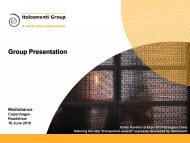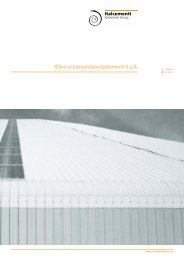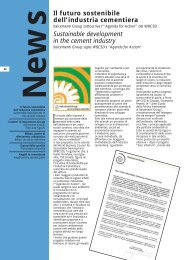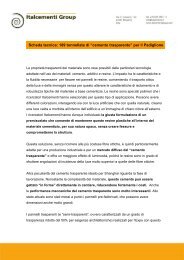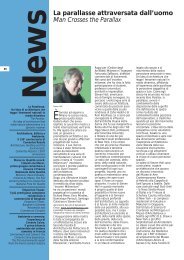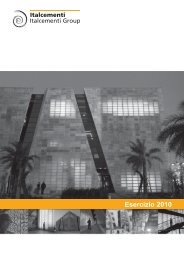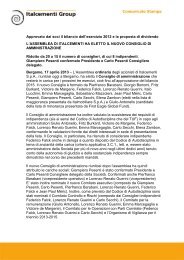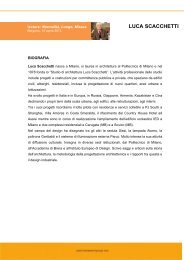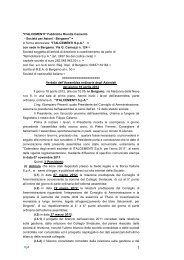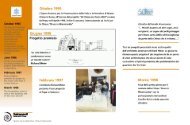2011 Annual Report - Italcementi Group
2011 Annual Report - Italcementi Group
2011 Annual Report - Italcementi Group
You also want an ePaper? Increase the reach of your titles
YUMPU automatically turns print PDFs into web optimized ePapers that Google loves.
Risks and uncertainties<br />
<strong>Italcementi</strong> S.p.A.’s management of risks (internal and external, social, industrial, political,<br />
financial) is an integral part of <strong>Group</strong> growth strategy and a key element of the continuous<br />
process of evolving the governance system. Risk management, in part through<br />
improvement of rules of conduct, aims to respect the environment, protect stakeholders<br />
(employees, customers, suppliers, shareholders), and protect corporate assets.<br />
<strong>Italcementi</strong> operates in a sector exposed to risks and uncertainties of various kinds<br />
(connected with external factors, operational, financial, organizational, compliance with<br />
regulations, etc.).<br />
In May 2010, <strong>Italcementi</strong> S.p.A. formed a Risk Management Department, reporting to the<br />
Chief Executive Officer, to improve its ability to create value for stakeholders by optimizing<br />
enterprise risk management (ERM). The mission of the function is to guarantee a<br />
structured approach to risk management, integrated with the <strong>Group</strong> growth strategy, and to<br />
support the improvement of <strong>Group</strong> performance by identifying, measuring, managing and<br />
controlling key risks.<br />
The creation of the Risk Management Department is part of the “Risk & Compliance”<br />
program set up in 2008 and consists of the following phases:<br />
1. identification of the main areas of risk for <strong>Group</strong> strategic goals and development of<br />
methods and tools to analyze and assess the correlated risk events;<br />
2. assessment, at country level and at aggregate level, of identified risk events in terms of<br />
impact, probability and timeframe, in order to acquire an overall vision of the <strong>Group</strong> risk<br />
portfolio;<br />
3. selection of priority risks and definition of response strategies, <strong>Group</strong> governance rules<br />
and action to integrate and improve risk management systems;<br />
4. implementation of defined mitigation strategies and action and development of the<br />
Enterprise Risk Management process;<br />
5. reporting to Top Management and the governance bodies on the main risks, and their<br />
management and evolution; in this phase quantification of risks and opportunities is<br />
integrated with the enterprise management process, for example in the budget, in<br />
results forecasting reviews and in assessment of strategic projects.<br />
Sustainable development and risk management: protection of people and assets<br />
Sustainable development favors a corporate approach that balances economic growth,<br />
protection of the environment and social sustainability. By constantly pursuing an optimal<br />
balance among these elements and ensuring that benefits extend to everyone involved,<br />
companies enhance their long-term value, ability to survive and competitive advantage,<br />
thus helping to prevent industrial risks.<br />
The <strong>Group</strong> checks that its protection and prevention programs are consistently applied to<br />
all personnel in production sites (employees and other) and to all operations in its<br />
companies.<br />
Regulatory limits and <strong>Group</strong> sustainable development goals and initiatives are examined in<br />
a special report (Sustainability <strong>Report</strong>) and also summarized in a specific section in the<br />
consolidated annual report.<br />
158



